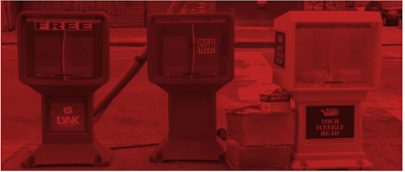FAQ: New York's Newspaper and Broadcast Media Jobs Program
The Newspaper and Broadcast Media Jobs Program in New York aims to bolster local journalism through $90 million in subsidies for retaining and hiring newsroom workers. This FAQ will explain the details of the program, including eligibility criteria, subsidy amounts, and the regulatory process involved.
What is the Newspaper and Broadcast Media Jobs Program?
The Newspaper and Broadcast Media Jobs Program will spend $90 million on retaining and hiring newsroom workers in the state. The bill divides the benefits into two pools – one for publishers with fewer than 100 employees and one for publishers with more than 100 employees. Both pools have $13 million available for subsidies to newsrooms based on the number of journalists they have on staff and what those newsrooms are paid.
A publisher will be eligible for a subsidy of up to 50% of the first $50,000 in salary paid to an employee. An outlet would also be eligible to receive an additional $5,000 if that employee is a new hire in that tax year. The benefits are capped at $320,000 per newsroom per year – $300,000 in subsidies on existing hires and up to $20,000 in new hire bonuses.
How did this program come about?
The Newspaper and Broadcast Media Jobs Program is the result of months of advocacy on the part of the Empire State News Coalition, labor unions, local digital-only outlets, members of the historic Black Press, nonprofit newsrooms, members of the Spanish-speaking press, the New York News Publishers Association, and the New York Press Association. Together, they advocate for the Local Journalism Sustainability Act. The bill’s name changed once it was included in the budget. It was inspired by the federal Local Journalism Sustainability Act that passed the U.S. House of Representatives but died in the Senate in 2021, along with the Build Back Better package.
Who qualifies for the subsidy?
The bill kicks some important decisions to the regulatory process, which will be overseen by Empire State Development. For example, the bill discusses “newspapers,” but does not define whether that includes digital-only or nonprofit outlets. It is also not clear how the program will support nonprofit newsrooms. These issues will be decided during the regulatory process. Lawmakers who sponsored the initial provision as well as the news outlets who advocated for it have stressed that the result of the regulatory process should honor the original intent of the bill: to support New York local news outlets on a content-neutral basis regardless of medium, business model or tax status.
The bill does provide some definitions, though. It identifies a qualifying news outlet as one that:
-
- Operates in the state of New York
- Discloses its ownership to the public
- Is not a publicly traded company or have no more than 5% of its ownership belonging to a publicly traded company or a subsidiary
- In the case of print outlets, show an at least 20% decrease in circulation over the last or full time equivalent employees over the last five years
Chain outlets are excluded based on the exclusion of publicly traded companies, but there is still an opening for these outlets since many will be able to show a 20% decrease in circulation or a 20% loss in full time staff.
When does it go into effect?
According to the text, the bill will go into effect in the tax year beginning January 1, 2025.
Is the bill entirely focused on local news outlets?
The bill does not limit the benefit to local news outlets. That said, the bill could be narrowed to local news outlets during the regulatory process or local news outlets could be given an advantage in applying for the benefits.
How will it work if there’s not enough money for everyone?
That will be decided during the regulation process as well, but there are two paths regulators could take. Empire State Development could decide that the program will be implemented on a first come, first served basis, meaning once the money runs out, no other newsrooms would be eligible for the benefit. The alternative would be to dispense the funds on a pro-rata basis, decreasing the amount of the benefit across the board if the program is overbooked. The latter has the benefit of ensuring all qualifying outlets are awarded funds.
There seem to be some unknowns about the program. When will those issues get clarified?
The regulatory process is likely to begin over the summer, though there is not yet a clear timeline. Regardless, there will be a period for public comments where stakeholders can weigh in with Empire State Development on how the program will be implemented.





